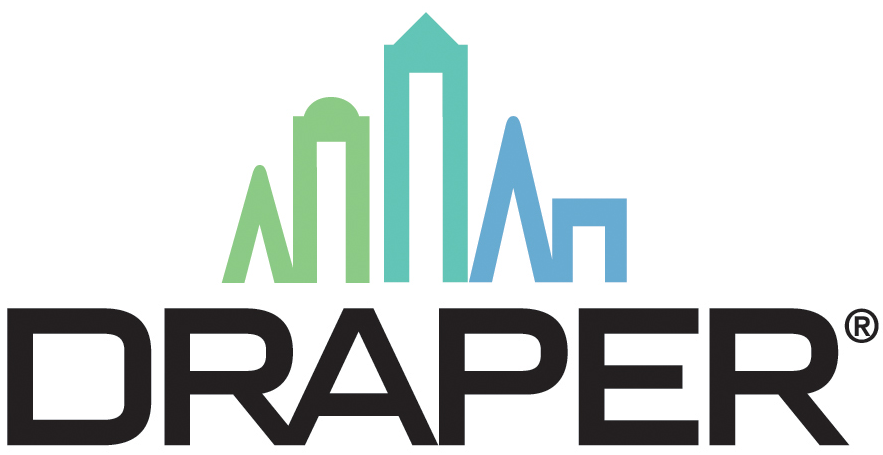Conserving resources with shades
February 5, 2020
The construction industry has a significant impact on the environment. Much of the impact is in carbon dioxide emissions and energy use.
Here are a few ways we can contribute to your efforts to reduce the environmental footprint of buildings—during construction and operation:
Saving energy
Automated shading systems maximize energy savings and glare control. When the sun is burning brightly, and moving across the sky, shades can move automatically to uniform, preset degrees of closure. These intermediate, preset stopping locations provide the owner with control over heat build-up during the day, so less energy is used to cool the building. They can be controlled locally by a wall switch or from a central location, such as the building manager’s office. Shade operation can also be programmed to occur automatically at predetermined times based on the angle of the sun. In addition to controlling heat gain, shades also permit the use of natural light, reducing the need for artificial lighting.
A plant-based alternative
Phifer SheerWeave fabrics made with DOW ECOLIBRIUM™—a bio-based plasticizer—are an answer to concerns over the presence in shade fabrics of petroleum-based chemicals called phthalates. DOW ECOLIBRIUM™ is a renewable, phthalate-free alternative, offering a more sustainable option, while having the same great performance and feel of current materials.
Using this bio-based plasticizer in shade material cuts greenhouse gas emissions by as much as 40% versus existing PVC compounds. Since it’s mostly from non-fossil fuel-based feed stock, there’s also a much lower carbon footprint.
Draper and Phifer created a calculator that approximates petroleum savings and greenhouse gas avoidance when using SheerWeave® Ecolibrium™ fabrics. Click here to calculate how big a difference you can make on your next project.
Recycled and recyclable fabrics
Draper shades using recycled and recyclable fabrics help you optimize conservation.
Mermet’s GreenScreen® Evolve™ and Revive™ are Cradle-to-Cradle Certified™ Bronze, meaning they meet minimum standards for material health, material reutilization, renewable energy/carbon management, water stewardship, and social fairness. They are made primarily of REPREVE polyester, a US-manufactured recycled and recyclable fiber made from used water bottles. Repreve is fiber made with 100% recycled content and is made responsibly to make a difference. The Repreve process includes collecting and using pre-consumer waste from manufacturing.
GreenScreen Nature™ helps us provide architects and designers with a product that has a limited number of material ingredients and satisfies sustainable building design. The fabric is 100% recyclable, PVC-free, and halogen-free. Another key sustainability advantage of GreenScreen Nature is its inherent fire resistance. As a 100% fiberglass shade material, GreenScreen Nature does not require additional FR additives to make it resilient towards burn and flame.
Phifer’s Infinity 2 is another recyclable/recycled solution. This sustainable sun control fabric is a full basketweave designed to meet the most stringent environmental design standards. With 100% recycled content, Infinity 2 is also 100% recyclable and PVC-free. Infinity2 fabric offers the same solar heat and glare control properties as traditional SheerWeave fabrics for conserving energy, harnessing natural light, and maintaining interior comfort levels.
Click here to compare all of our fabric options.
Unplug from the power
Consider conserving resources by unplugging your motorized shades and using battery power. FlexShade® ReCharge is a rechargeable, motorized window shade. It is easy to install in difficult areas with no wiring or electrician needed. Increase your energy conservation by connecting your ReCharge motors to solar recharging panels.
Each charge lasts over 500 cycles, several months of normal usage. ReCharge is Alexa or Google Home compatible using the Recharge Data Hub.
Learn more about the FlexShade Recharge here.
@Draperinc #Draperinc #shades #windowshades
Company:  Draper, Inc.
Draper, Inc.
Product: Window Shades
Source: https://blog.draperinc.com/2019/09/conserving-resources-with-shades/
Tags:
Energy
4 Ways to Reduce Energy Costs in Commercial Buildings (March 8, 2019), Energy saving glazing options cut energy costs (October 31, 2018)
Recycling
Commercial trash receptacles to reduce litter and promote recycling (March 11, 2019), Material Highlight: High-Density Polyethylene (February 11, 2019), Resin planters and lampposts: easy to maintain and graffiti resistant (October 1, 2018), An orderly revolution in waste control (August 3, 2016), New product launched minutes ago! Central Park Conservancy (March 12, 2015)
Window Shades
Control the Sun with Sunshades: How to shade Southern, Southeastern/Southwestern, Eastern and Western exposures (April 26, 2019), Incorporating the metallic look into your daylighting strategy (March 25, 2019), Privacy and daylighting in the same window (February 25, 2019), New safety standard for shades keeps kids safe (December 17, 2018)

